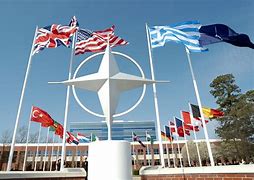NATO, or the North Atlantic Treaty Organization, is a political and military alliance that was established in 1949 with the goal of ensuring the security of its member states through collective defense. The organization's members consist of 30 countries in North America and Europe, including the United States, Canada, and many European nations. NATO has been instrumental in maintaining peace and stability in the Euro-Atlantic region since its creation, and it continues to play an important role in today's complex geopolitical landscape. This article will provide a detailed guide to understanding what NATO is, its history, its mission, and its importance in today's world.
History of NATO:
NATO was established in 1949, following the end of World War II, as a collective defense alliance against the threat of Soviet aggression. The organization was founded by 12 countries, including the United States, Canada, and several European nations. Its primary mission was to protect the member states against any potential threat from the Soviet Union and its allies. Throughout the Cold War, NATO remained a crucial force in maintaining peace and stability in the region, and it played a key role in the eventual collapse of the Soviet Union.
Mission of NATO:
The mission of NATO is to safeguard the freedom and security of its member states through collective defense. This means that if one member state is attacked, all members are obligated to come to its defense. This principle of collective defense is enshrined in Article 5 of the North Atlantic Treaty, which states that an armed attack against one or more member states shall be considered an attack against them all. In addition to its collective defense mission, NATO also works to promote cooperation and stability in the Euro-Atlantic region through political dialogue and practical cooperation with partner countries.
Structure of NATO:
NATO is a complex organization with a hierarchical structure. At the top is the North Atlantic Council, which is made up of the ambassadors of all member states. This council provides overall political direction and guidance for NATO. The military structure of NATO is headed by the Supreme Allied Commander Europe (SACEUR), who is responsible for the overall command and control of NATO military operations. There are also several subordinate commands, including the Allied Command Operations (ACO) and the Allied Command Transformation (ACT).
Importance of NATO:
NATO has played a crucial role in maintaining peace and stability in the Euro-Atlantic region since its establishment. Its collective defense mission has helped to deter potential aggressors and has provided a sense of security to member states. In addition to its military mission, NATO also works to promote cooperation and stability in the region through political dialogue and practical cooperation with partner countries. In today's world, with increasing security challenges and a rapidly changing geopolitical landscape, NATO's importance is as crucial as ever.
Frequently Asked Questions (FAQs):
Q: How many countries are members of NATO? A: There are 30 member countries in NATO, including the United States, Canada, and many European nations.
Q: What is NATO's primary mission? A: NATO's primary mission is to safeguard the freedom and security of its member states through collective defense.
Q: Has NATO been involved in any military operations? A: Yes, NATO has been involved in several military operations, including the war in Afghanistan and the air campaign in Libya.
Conclusion:
In conclusion, NATO is a political and military alliance that has played a crucial role in maintaining peace and stability in the Euro-Atlantic
